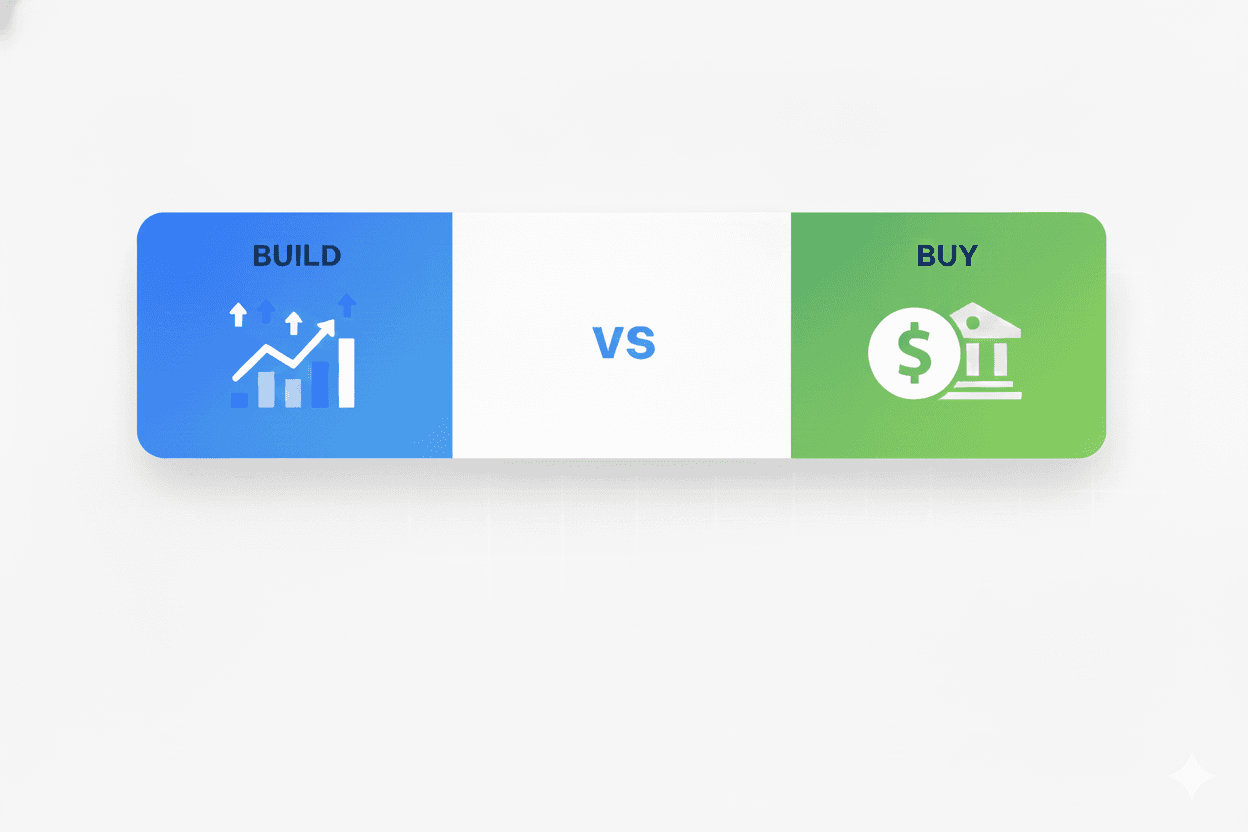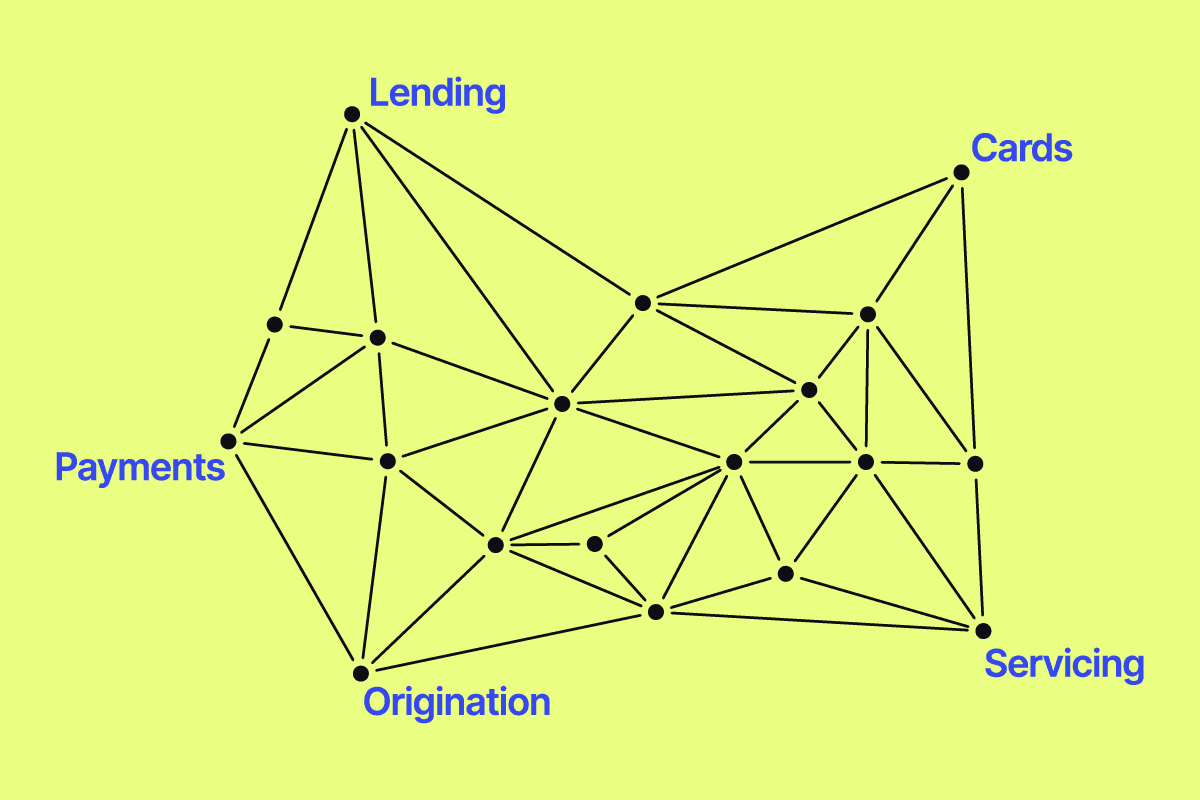Modern digital lending operations require a smorgasbord of interconnected solutions. Everything from payment processing, issuer processing, accounting, customer relationship management, and much more is often run through a separate solution or service provider.
Trying to run a lending operation without connecting these various pieces doesn’t cut it in today’s environment, where speed and convenience are what customers expect. Manual processes and siloed, disparate systems can’t deliver customer experiences that match modern expectations.
However, with the power of APIs (application programming interfaces) and automated workflows, lenders can now build seamless lending programs that weave together every piece of the process under one go-to system. In this article, we’ll discuss how.
Key takeaways include:
- How to stitch together a seamless lending program using APIs to connect everything from origination to servicing.
- How to automate your loan program workflows from end-to-end.
- How APIs and workflow automations unlock scalability and growth.
Stitching together your disparate loan systems with modern APIs
Disconnected systems for each piece of the loan lifecycle are an efficiency killer for lenders. A modern lending system might still use many systems for different processes like issuing, origination, and payment processing, but those are all connected under a system-of-record using APIs.

Here are four ways that APIs help lenders:
1. They connect everything: The only way modern lending systems work in harmony is for them to be connected so they can automatically send information back and forth, which is what APIs do.
For example, in an API-connected system, a missed payment can automatically trigger several actions, including a customer reminder/warning sent through the CRM, inclusion in a late payments report sent through the servicing platform, and an automatic flag to the credit and collections reporting system.
2. They remove manual work: In the example above, much manual work is removed because the systems are connected via API. Without these connections, a lending operations team member would have to export a report of missed payments from that payment system, manually send reminders/warnings to each customer that missed a payment through the CRM, and manually send the missed payment information to the credit and collections reporting.
With an API-connected system, these processes can all happen instantly through automated workflows (more on that in the next section), but this is only possible because these systems can move information back and forth via APIs.
3. They enable loan programs to scale: Some lenders can’t grow their lending programs efficiently because they rely on manual, disparate systems. To scale means hiring more employees to do more of that manual work, which reduces profitability and growth potential.
With an API-connected system that uses automated workflows, lenders can scale the operational part of their business without relying on manual work. Then, employees can focus on growing the business rather than simply keeping it running.
4. They enable innovative lending products: Enhanced data flow and interoperability unlock the ability for lenders to create new and exciting loan products that better meet the needs of their target customers. When data between systems is unlocked, it makes it easier for lenders to create flexible products.
For example, using API-connected systems, lenders can track the dynamic value of collateral for secured loans in real-time. This means they could use assets that vary frequently in value, such as cryptocurrency, to secure loans. Credit limits can dynamically rise and fall with the value of the crypto collateral. With siloed data, this wouldn’t be possible.
Canopy Connect uses APIs to enable lenders to easily stitch together every service and system they use across the loan lifecycle. It combines everything under one system of record, where lenders can fit each piece of the disparate puzzle into a seamless, interconnected workflow.
However, APIs are only part of the equation. Automated workflow builders are equally important.
From origination to servicing: Creating end-to-end loan workflow automations
It’s one thing to connect lending systems via APIs, but to unlock scalability and growth, lenders need to use those connections to build automated workflows at every stage of the loan lifecycle.
Traditionally, building a connected system with automated workflows has been resource-intensive, expensive to maintain, and slow to market. However, API-connected tools like Canopy Connect have reduced the cost and complexity of connecting a complex lending operation under one single source of truth.
With workflow automations, lenders can automate every manual notification and touchpoint. Events such as fraud alerts and account delinquencies trigger an automated response. Changes in one system are automatically pushed to others. For example, if a borrower’s account status is changed based on payment status, that can automatically update the CRM and accounting software without human intervention.
Other actions, such as creating and sending business reports and account statements, are also easily automated with API-connected workflows. It’s easier for lenders to keep borrowers informed, which can help with retention.

Additionally, with API-connected workflow automations, custom alerts can help lenders take action to reduce risks. Lenders can set account thresholds for the percentage of credit limit reached, for example, and get an automatic notification when that limit is breached. That notification could trigger a notification to the borrower to let them know they are in danger of hitting their limit, reducing the possibility of default. Possibly, a flexible loan servicing workflow could even increase that credit limit if the customer has been in good standing for several years.
API automation unlocks scalability
Most importantly, workflow automations enable lenders to scale their business, as manual workflows limit the amount of new customers they can take on. When more processes are automated, lenders can more easily take on new customers and scale their portfolio to a much higher number of accounts.
It also makes it easier for non-financial businesses, or embedded SaaS lenders, to integrate lending more seamlessly with the rest of their business. They can plug their loan program into their other systems with APIs, then connect and automate workflows so it can run at scale.
It’s been easier to focus on our client experience and integrate it with the rest of the Flexport AUX. All of our loans and the data structure are set, so we don’t have to worry about that or calculations.
Canopy Connect empowers lenders to move beyond the limitations of manual processes and disparate systems that hold many lending programs back. Connecting their entire lending operation under one roof via APIs and using workflow automations to link and automate every process enables unprecedented efficiency, scalability, and growth.
For lenders who want to innovate and thrive in modern lending, a system that enables API-connected automation is critical.
Interested in learning more about building a connected, automated lending program? Talk to Canopy today.




